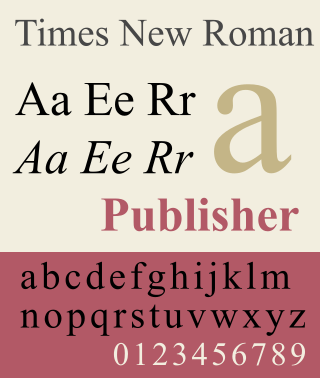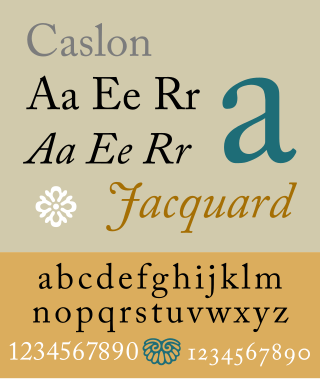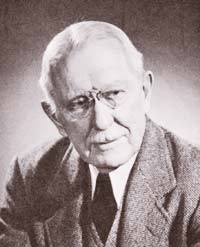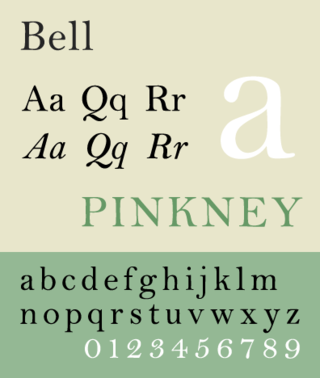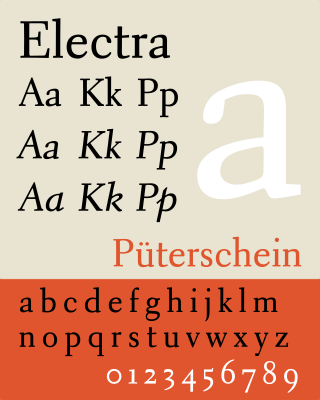Notable works
Over its 56-year history, Merrymount Press produced a significant volume of ephemera, especially for local businesses and organizations. Advertisements, dinner invitations, letterhead, and the like were Merrymount's bread and butter, keeping the Press in operation. What made Updike New England's most distinguished printer, however, were the beautiful, finely printed books produced by Merrymount Press. Below is a sampling of what many consider to be the Press's most noteworthy works.
Altar Book
Merrymount's first major work was the Altar Book—begun in 1893 and completed in 1896—financed by Harold Brown. Updike attributed the establishment of Merrymount Press to the commission of the Altar Book saying, “Had I not had this definite work to do I should not have had the courage to leave my current position [at Riverside Press].” [19] The Altar Book was set in the Press's proprietary Merrymount typeface, which was designed by Bertram Grosvenor Goodhue in 1895 and based on William Morris's Arts and Crafts style—or what Updike later called “Morris’s unduly black types.” After completing the Altar Book, Updike quickly abandoned this heavy style in favor of a cleaner, more practical look and reserved use of the Merrymount typeface for large pages as in the Altar Book. [20]
Vexilla Regis Quotidie

While the Altar Book was being prepared, Updike worked on other titles. The first of these was Vexilla Regis Quitidie, completed in 1893. The book was a selection of prayers and hymns for every day of the year compiled by Lucy Bradlee Stone. Because Merrymount had not yet acquired much type, the book was actually printed by Riverside Press, although Updike did arrange the book. [21]
The Humanists’ Library
The Humanists’ Library, edited by Lewis Einstein, was issued in two series and was printed in the Press's proprietary Montallegro type designed by Herbert Horne. The first series was printed between 1906 and 1908, the second from 1912 to 1914. Each consisted of four titles: [22]
- Thoughts on Art and Life by Leonardo da Vinci. Translated by Baring, Maurice. Boston: The Merrymount Press. 1906 – via Internet Archive.
- Mackail, J. W., ed. (1907). Against War by Erasmus. Boston: The Merrymount Press – via Internet Archive.
- Petrarch and the Ancient World by Pierre de Nolhac (1907)
- The Defence of Poesie: A Letter to Q. Elizabeth and A Defence of Leicester by Sir Philip Sidney; edited by G.E. Woodberry (1908)
- The Correspondence of Philip Sidney and Hubert Languet edited by William Aspenwall Bradley (1912)
- Records of Journeys to Venice and the Low Countries by Albrecht Dürer; edited by Roger Fry (1913)
- A Platonick Discourse upon Love by Pico della Mirandola; edited by Edmund G. Gardner (1914)
- A Renaissance Courtesy Book: Galateo of Manners & Behaviours by Giovanni della Casa; introduction by J.E. Spingarn (1914)
Book of Common Prayer
In 1928, the Episcopal Church decided to issue a revision of its Book of Common Prayer, to be financed by J.P. Morgan, Jr., whose father had funded the previous revision in 1892. Morgan solicited designs from several printing houses, including the Oxford and Cambridge University Presses, William Edwin Rudge, and Merrymount Press. Updike provided two designs for the Prayer Book, one in Lutetia typeface and one in Janson; the Dutch Janson was ultimately chosen for what would become known as Merrymount's finest work. Five hundred copies were issued in November, 1930, and a year later the book was named one of the American Institute of Graphic Arts Fifty Books of the Year. [23]
Edith Wharton

Updike's friendship with Edith Wharton led to a long and successful relationship between Merrymount Press and Wharton's publisher, Scribner's. When Wharton published her first book in 1899, The Greater Inclination, she insisted that Merrymount be the printer. Merrymount would print many more of Wharton's books and other titles published by Scribner's. The association was a fruitful one and vital to Merrymount's success in its early years according to Updike: “Nothing could have helped the Press more, just then, than the Scribner connection, for it showed we were not amateurs but could hold our own with larger printing houses…” [24] In 1915, after visiting the front of World War I, Wharton began collaborating with Updike to plan a collection of original stories, essays, poems, art works, and musical scores, the profits from which would benefit the war effort. The book was published in 1916 alongside a special limited edition run of 175 copies, each signed by Updike. [25]
Limited Editions Club
Between 1930 and 1942, Merrymount Press published eight books for The Limited Editions Club, a publisher of fine bindings. The Limited Editions Club issued just 1,500 copies per title and was available only to subscribing members. Merrymount also printed The Limited Editions Club's first prospectus, issued as a hardcover book. [26]
- 1930: The Fables of Jean de La Fontaine
- 1932: The Jaunts and Jollities of Mr. John Jorrocks by R.S. Surtees
- 1933: The Brothers Karamazov by Fyodor Dostoevsky
- 1934: A Christmas Carol by Charles Dickens
- 1936: Walden, or, Life in the Woods by Henry David Thoreau
- 1940: Pride and Prejudice by Jane Austen
- 1941: The Flowering of New England by Van Wyck Brooks
- 1942: The Education of Henry Adams
